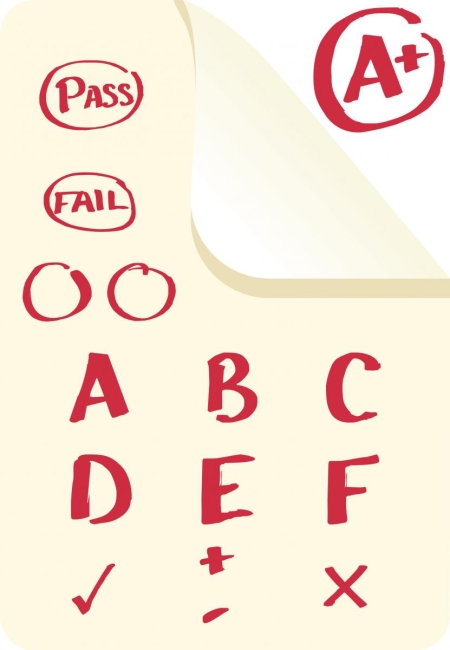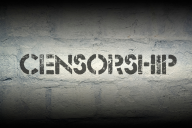You have /5 articles left.
Sign up for a free account or log in.

In the spring of 2020, I served as a teaching assistant for a lower-division history course at the University of California, Los Angeles. The campus shut down just before spring break, and our class was moved online in response to COVID-19. During my weekly meetings with students, I was met with increasingly exhausted and doubtful faces as the quarter progressed. They shared that they were struggling to stay focused. They wanted to connect the course material to the crisis currently destabilizing their lives and write about the effects of the pandemic in their essays.
The professor supervising the course kept the assignments the same but privately encouraged us TAs to be lenient in our grading. We allowed students to submit material weeks late, passed students who missed major assignments and inflated grades to meet a provided quota for A's, B's and C's. While reviewing students’ essays, I would comment that they were missing pieces of evidence or had not fully developed their arguments. Yet their grades suggested they had little room for improvement. At the end of the quarter, nearly every student earned an A or B. Fewer than half the students attended the final class meetings.
Although it was appropriate and necessary to modify our expectations in response to the pandemic, our grades were a weak and ineffective measurement of student learning that spring. In fact, by focusing students’ attention on a grade that did not reflect their abilities, we probably inhibited their academic progress. We encouraged them not to consider how they could improve and what they had gained from the course. They could simply take their high grade and move on.
That experience showed me that we need to rethink traditional assessment methods. The problem cannot be solved by cracking down on grade inflation, which would be insensitive and cruel given the current circumstances. Instead, instructors should reflect on the grading dilemmas caused by the pandemic and recognize that grading has always been arbitrary and unproductive. The best way to truly assess a student’s learning right now is to allow them to assess themselves.
Hitting a Dartboard While Blindfolded
During the spring semester, colleges and universities across the United States relaxed their grading standards and permitted students to opt for pass-fail grading rather than letter grades. Institutions were not so tolerant this fall, with faculty members and administrators resisting requests from student organizations to expand pass-fail options.
It is highly unlikely that students are academically thriving in classes hastily adapted to the current health crisis. The National Institute for Learning Outcomes Assessment launched a survey over the summer to determine how institutions changed their grading policies in response to COVID-19. One respondent wrote that when instruction went online, “faculty believed academic standards were lowered.” Rather than changing the format of their assessments, “they reverted to more historical means of testing, proctoring and reducing perceptions of cheating.” The burden for determining how students should be graded has been passed on to instructors, many of whom are underpaid graduate students and adjuncts.
As a teaching assistant, I found that assessing students was like trying to hit a dartboard while blindfolded. I wanted my grades to be an accurate reflection of a student’s growth, accounting for their personal circumstances, educational background and the skills we tried to develop during the course. It is impossible to use a letter grade for that type of evaluation. Grades are a poor replacement for the personalized, detailed feedback that teachers should provide.
If colleges and universities want to keep standards high and continue giving out letter grades, students must be included in the assessment process. We need to trust that students are the best authorities on their learning and that they are invested in their education. Self-assessment offers a real chance for increasing equity in higher education as the pandemic exacerbates racial and financial disparities. When students are not judged against each other and their achievements are not quantified, students and instructors can have a dialogue about students’ abilities and the learning objectives of the course. Courses should be designed to prepare students for self-evaluation.
Self-assessment is well suited to the experience of remote or hybrid classes, where students have more autonomy over the learning experience. Colleges and universities have already asked students to be responsible for their home environments and keep track of coursework digitally. It is an opportune time for students to collaborate with professors on assessments.
When I was teaching in the spring, I saw students who felt disconnected from their institution and classmates. They were completing assignments just to make it through the class and get their grade, not to learn a skill or idea they could take beyond the course. Teaching felt mechanistic, and students could not organically follow their interests. Students would be more motivated if grades were not treated as the most important component of their education. Believing that students actually want to learn is a revolutionary and necessary pedagogical shift.
More Than an Emergency Measure
Self-assessment can take multiple forms and is not an invitation for instructors to step back from assessing students completely. Students and professors should collaborate on learning objectives from the outset of the course, giving students the flexibility to determine how the class fits into their intellectual development. Professors should continue to provide feedback, focusing on a holistic set of expectations rather than a rigid grading scale. Alternatively, they could use a peer-review system in which students check each other’s work.
At the end of the course, students should complete a comprehensive review of their performance and offer a suggested grade for the professor to approve or amend. Whatever form self-assessment takes, the focus must be on the process of learning: how students are acquiring new skills and applying those skills to the central questions of the course.
A national survey of undergraduate students examining online learning during the pandemic found that students were more satisfied when given assignments “that asked them to express what they had learned and what they still needed to learn.” Self-assessment necessarily includes self-evaluation. An abundance of research shows the importance of metacognition in academic success, namely the ability to monitor one’s learning process and plan steps for improvement. Self-assessment would boost student effort and motivation, improve academic outcomes, and reduce incidents of cheating. Such measures are badly needed right now, when students are more likely to be unmotivated in their courses and considering alternatives to a college degree.
Self-assessment is more than an emergency measure to solve the problem of equitable grading during a pandemic. It is an opportunity to revolutionize the outdated hierarchies and old-fashioned pedagogical methods that stymie creativity and innovation at our educational institutions.
Any teacher can tell you that the desire to learn cannot be manufactured with the threat of a poor grade. Grading rests on the false belief that student effort must be ranked and quantified. The real value of students’ work is the value that students assign themselves.






.png?itok=IbqmTd2P)

